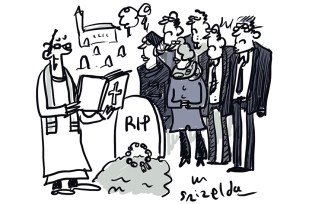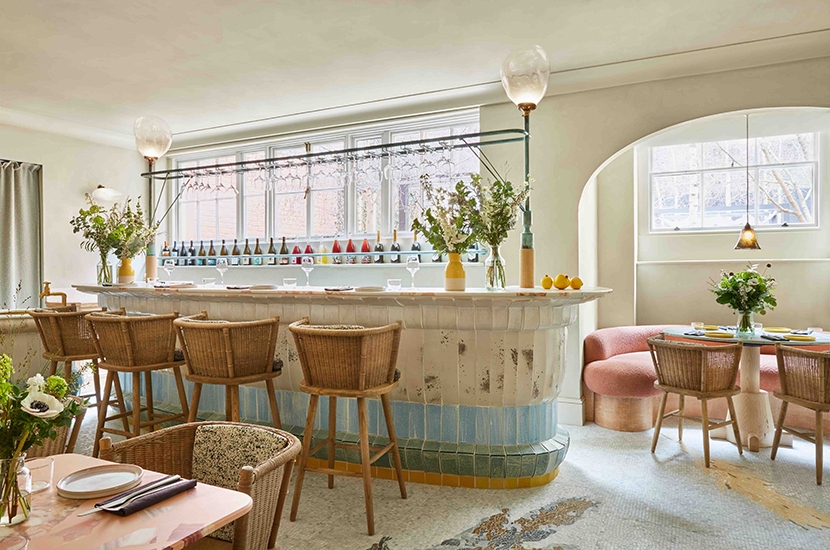Browns is a famous fashion boutique in deepest Mayfair. It occupies a curved cream townhouse on Brook Street, which seems sunken and shuttered. Perhaps it is the lingering effects of the pandemic or because it’s late summer, but the interior — carefully designed over multiple eyries over many floors, like gold teeth fallen on a garden — feels lifeless and necrotic. High fashion needs joyful people to wear it (or at least people pretending to be joyful, which is more usual) and here there are none.
Perhaps they are all in the south of France? Perhaps they never existed and were invented so the rest of us, regarding their perfection, would buy cheap moisturiser and cheap knickers? I don’t know anyone who would pay thousands for a dress made of recycled fashion labels to illustrate the excellence of sustainability — it is pointed out to me on the ground floor, exhibited like Ozymandias — but that doesn’t mean they don’t exist. Human idiocy is an infinite resource. I do not say high fashion is unsophisticated. I say it is sophisticated and horrifying.

Even so, Browns — a pioneer of British fashion (it supported the doomed Alexander McQueen in his earliest years as a designer) — is expanding. Having passed from the Burstein family to a fashion website called Farfetch, which is quite realistically named for a high-fashion company, it has now opened a restaurant called Native next to the boutique.
As current interior design dictates, Native is so mute as to wish itself invisible. You go through a room filled with golden training shoes and into a tiny dining room. Here pale grey battles with pale beige through wood, wicker and stone. They both lose. The floor is mosaic, with a drawing of a pig, or maybe a dog, flat and dead. There is, I think in homage to the pandemic, a huge ornamental sink between the bar and tables. I know the district is unclean (bring out your dead, ideally in Prada), but a kitchen sink in a tiny dining room? Why?
Everything but the mesmerising sink is tiny in Native. The tables are tiny and decorated with an arrangement of tiny dead flowers. They are spindly like fashion hags. The room is tiny. The portions are tiny. The diners are tiny. I wonder if the plants in the garden — to which we are not admitted as it is raining tiny raindrops — are tiny.
As current interior design dictates, Native is so mute as to wish itself invisible
There is no paper menu. For £82 (not including wine) you deserve a piece of paper, but here you don’t get one. There is only a QR code, which you scan with your phone to open the menu on a website. You are therefore both in a restaurant and on its website at the same time, and that is as nightmarish as you can imagine.
Of course, Native excels in salad. It is as pretty and as transient as the clothing in Browns and it will help you be tiny enough to fit into it, if you are not tiny enough already. The tomato salad with ‘yesterday’s bread’ is superb for what it is: as bright and sweet as Maria von Trapp before the Anschluss got her. But Native’s expertise begins and ends with salad. The fermented potato waffle with yeasted onion and mushroom parfait is a mistake, like eating a pop tart with an avocado. So are the potato risotto — a food that shouldn’t have been invented — and the fish filet with seaweed tartar and a brioche. It tastes like a fishfinger and looks like a brick.
It is safe, then, to come here for tomato salad before buying a pair of golden training shoes for £1,000, or £500 per shoe. It is not joyful.
Native at Browns, 39 Brook Street, London, W1k 4JE; Tel: 020 7549 5999







Comments